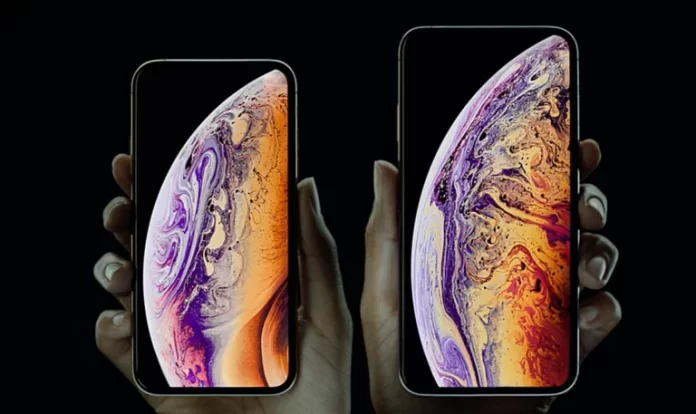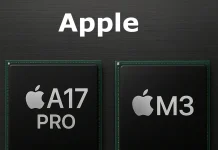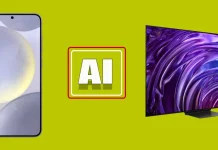What is the Retina display in Apple: Oddly enough, the question of what the difference between the iPhones and iPads screen types has been discussed for a long time, but in all that time there is no consensus on the difference between Apple Retina and Liquid Retina or Super Retina. So we decided to write a clear explanation of this question to help people understand the differences.
What are Retina displays on Apple devices?
Apple Retina, Liquid Retina, Super Retina, Super Retina XDR display, and Retina HD are commercial screen type names, introduced by Apple. They were introduced primarily for marketing purposes and they don’t reflect any strict technical parameters, that’s commercial names first of all, not a technology. Similar names are made up by different device brands (not just Apple), the purpose of all these names is simple – show that the device has some futures on a subconscious human level.
If we speak about Retina, Liquid Retina, Super Retina, and Retina HD: these names are Apple Inc. trademarks registered in the U.S. and other countries. You can see the complete list of Apple Inc. trademarks here.
Difference between Liquid Retina vs Super Retina vs Retina
- Apple Retina is the first name for the Apple screens their main feature is the resolution higher than HD. The screens are made using classic LED technology. By the way, taking into account that Apple devices are high-end ones, the screens are also of fairly high quality. Apple uses IPS technology, so such screens have a good brightness ratio and viewing angles. But if speak in technical terminology that’s IPS LED screens.
- Apple Liquid Retina is a second commercial name given to IPS LED screens. This name was given to some devices in order to highlight them between other devices.
- Super Retina differs from the two previous screen types by its technology. While Retina and Liquid Retina screens are made with LED technology, Super Retina screens are OLED ones.
How good is Liquid Retina display? Liquid Retina myths
There are a lot of myths about Liquid Retina displays around the Web. Of course, we don’t mean that Liquid Retina displays are bad, but we just mean that you should distinguish myths from reality:
- Retina displays have a very high pixel density. On the one hand, that’s true. However, there’s a marketing trick behind such a statement. In fact, any display with a high screen resolution will have a high pixel density.
- Liquid Retina displays have a very high pixel density that creates a paper-like effect. We already explained the pixel density marketing trick, but you should also understand that IPS displays can’t be paper-like, as any display can’t replicate the paper structure. Due to a high screen resolution, the picture is really very clear, but describing it as ‘paper-like’ is a marketing trick.
- Retina is a display specifically designed by Apple for its products. This statement is also half-true. Apple relies on components supplied by Samsung, LG, and BOE. There’s a part of Apple technologies behind these displays, but the main technologies were developed by the suppliers.
Is Liquid Retina display good for eyes?
While not inherently beneficial to eye health, Liquid Retina display technology has several features that can mitigate the potential strain and side effects associated with prolonged screen use. Like any digital screen, prolonged exposure can lead to eye fatigue and discomfort, especially in poor lighting conditions. However, the advanced characteristics of Liquid Retina displays used in Apple devices offer improvements over lower quality screens, potentially reducing some risk factors for eye fatigue:
- High resolution and pixel density. Liquid Retina displays’ high resolution and pixel density produce more explicit text and images. This clarity can help reduce eye strain because the eye doesn’t have to work hard to focus on finer details, which is often a problem with low-resolution screens.
- True Tone Technology: This technology adjusts the display’s color temperature based on ambient lighting conditions. By making screen lighting more natural and less harsh, True Tone helps reduce eye strain, especially in varying lighting conditions.
- Wide range of colors. Liquid Retina displays can produce more vibrant and accurate colors with support for a wide color gamut. While not directly related to eye health, accurate color reproduction can make viewing more enjoyable, potentially reducing discomfort associated with too bright or distorted colors.
- Anti-glare coating. Some Apple devices with Liquid Retina displays also have an anti-glare coating to reduce glare from external light sources. This can minimize eye strain caused by reflections and excessive bright contrasts.
Is Liquid Retina bad?
In the context of discussing Apple’s Liquid Retina, Retina and Super Retina displays, it is important to emphasize that these technologies are not “bad” compared to others on the market. These screens are high-end solutions that offer the user improved image quality, high resolution and pixel density, resulting in extremely sharp and detailed images.
The main difference between Apple’s displays and other flagship displays is the nuances of the marketing names rather than drastic differences in quality or harm to the eyes. Flagship displays from other manufacturers also often offer comparable image quality and pixel density.
Choosing between Apple displays and other flagships often comes down to personal preference, budget, and brand loyalty. It’s important to keep in mind that all of these displays are designed to offer high image quality, and the differences may not be as significant to the average user.
Also, you can check out this article about Liquid Retina Display explained and you can ask your questions in the discussion as well, I will try to answer any questions ASAP.
Super Retina XDR display mean explained
The Super Retina XDR display is another variant of OLED and LED displays for Apple devices. It stands for XDR, eXtreme Dynamic Range. You should know that this is another commercial name for the displays installed in Apple monitors and phones. This is not technology, if you find this name on an Apple phone or monitor, you should understand that such a display is just very high quality. Of the features we can say that such displays have these characteristics.
- P3 wide color gamut,
- 10-bit depth for 1.073 billion colors
- Brightness: 1000 nits stable full-screen, 1600 nits peak (only for HDR content)
So, what can I say about these parameters, P3 color gamut is a pretty broad concept, yes, I know that this color gamut is pretty big, but I also know that realistically only a very small percentage of people will be able to see the full gamut of hues . A depth of 10 bits is good and very close to understanding color gamut. As for brightness, you should know that 1000 nits is a pretty big brightness, and peak brightness means nothing at all. If you look at a white screen at maximum brightness and contrast, you get a peak brightness of 1600 nits on a Super Retina XDR display, which is unrealistic in real life.
It’s just that Apple has come up with a good move, when you buy a phone with a Super Retina XDR display, you know that such a phone has the highest quality display with very good technical parameters.
Does a Liquid Retina display actually have liquid?
All LCD (liquid crystal display) screens operate on the fundamental principle of using liquid crystals, a unique type of substance filled with crystalline particles. These particles can change their spatial orientation under the influence of electrical voltage. This change in orientation directly affects the polarization properties of the crystals, allowing them to modulate the amount of light they transmit. This mechanism is at the heart of LCD displays, which in today’s context are also often referred to as LED screens, even though LED refers to the backlight technology rather than the display mechanism itself.
What is special about Liquid Retina display?
The Liquid Retina display is a marketing term Apple employs to denote the high-resolution and high pixel-density LCD screens utilized across its device range. This nomenclature highlights the premium nature of Apple’s displays, distinguishing them within the marketplace. Despite the specialized branding, the core technology behind Liquid Retina displays aligns with that of advanced LCD screens found in products from other manufacturers, such as Samsung. The emphasis on terms like “Liquid Retina” elevates the perceived value and innovation of Apple’s products, leveraging the allure of exclusive terminology to underscore the superior visual quality these displays are purported to offer. While the technical specifications—such as high resolution and pixel density—remain comparable to other high-end displays in the industry, the branding strategy aims to create a distinct identity and perceived advantage in the consumer electronics market.
Which is better OLED or Retina display?
You can’t compare like that, it’s all conditional, Retina is a commercial name that is used to name displays, OLED is a technology used to make displays. Moreover, Super Retina is a display made using OLED technology. It’s like asking if Apple is better than iPhone.








It all depends on the display manufacturer and materials. Probably not.
Does Liquid Retina and Retina LCDs have the same white colour balance